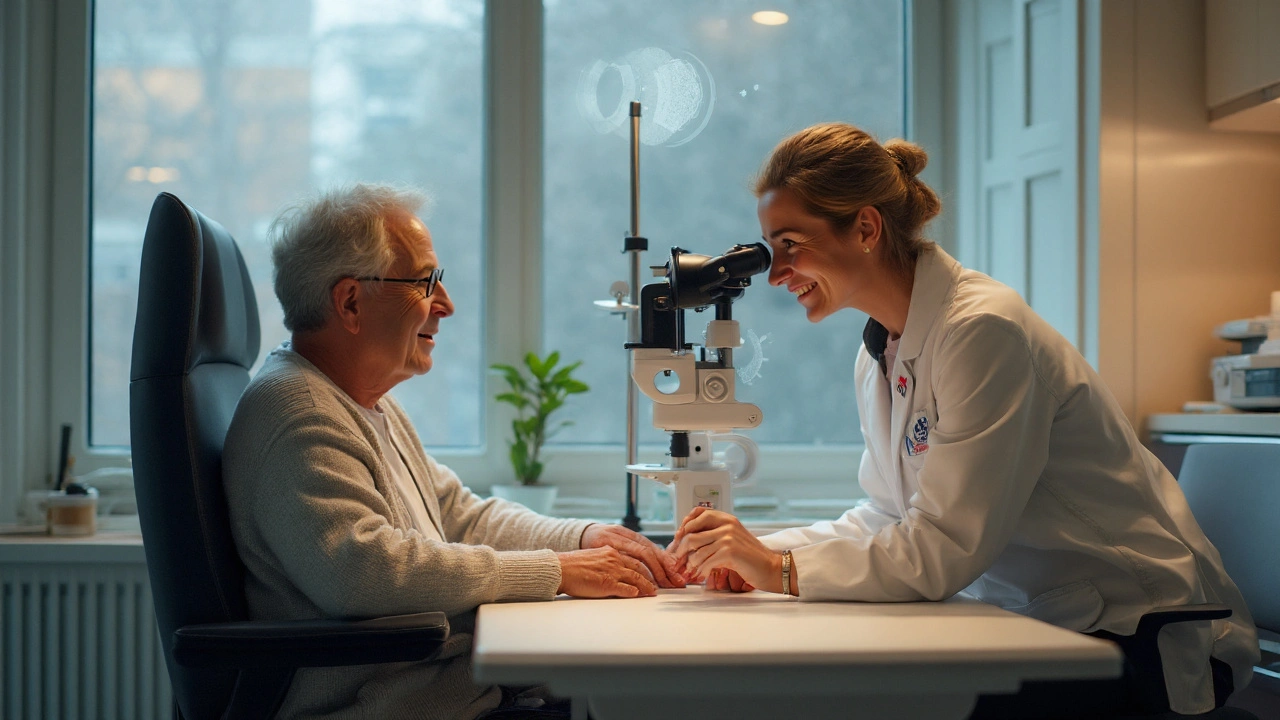Vision Health Made Simple: Everyday Habits for Clearer Eyes
Your eyes work nonstop, so giving them a break isn’t a luxury—it’s a must. Let’s cut the jargon and talk about real‑world steps you can take right now to protect your vision.
1. Give Screens a Timeout
Staring at a phone, laptop, or TV for hours can strain the muscles that focus your eyes. The 20‑20‑20 rule is a quick fix: every 20 minutes, look at something 20 feet away for at least 20 seconds. It feels like a tiny pause, but it lets the eye lenses relax and reduces fatigue.
If you work at a desk, position your screen about an arm’s length away and keep the top of the monitor at or just below eye level. Adjusting brightness to match the room’s lighting also cuts glare.
2. Eat Food Your Eyes Love
What you eat shows up in the health of your retina and lenses. Foods rich in lutein, zeaxanthin, and omega‑3 fatty acids act like natural sunglasses from the inside out. Try adding leafy greens (spinach, kale), orange veggies (carrots, sweet potatoes), and fatty fish (salmon, sardines) to your meals.
A handful of nuts or a spoonful of flaxseed each day gives a boost of omega‑3s. If you’re not a fan of fish, a daily supplement with DHA can fill the gap, but always check with a pharmacist first.
3. Keep the Lights Right
Bright overhead lights can create harsh reflections, while dim lighting makes you squint. Aim for even, indirect lighting when reading or working. A desk lamp with a warm LED bulb (around 3000 K) reduces glare without washing out colors.
When you’re outdoors, wear sunglasses that block 100% UV-A and UV‑B rays. Even on cloudy days, UV can damage the cornea and lens, so a good pair of shades is a year‑round habit.
4. Schedule Regular Eye Checks
Most vision problems develop slowly, and you might not notice them until they affect daily life. A baseline eye exam at least once every two years catches issues early—whether it’s early cataract formation, glaucoma, or a change in prescription.
If you have diabetes, high blood pressure, or a family history of eye disease, see an optometrist yearly. Early detection can mean simpler treatment and better outcomes.
5. Protect Your Eyes from Injuries
Simple safety habits prevent a lot of eye trauma. Wear safety goggles when doing DIY projects, gardening, or playing sports with fast‑moving objects. Even a tiny splinter can cause an infection that scars your cornea.
If you get something in your eye, rinse it with clean water or saline. Avoid rubbing—rubbing can scrape the surface and make things worse.
Putting these habits into practice doesn’t require a major overhaul. Pick one tip, try it for a week, and add another. Over time, you’ll notice less eye strain, sharper vision, and a lower risk of long‑term problems. Your eyes are the only window to the world—keep them clean, fed, and protected.
Why Regular Eye Exams Are Crucial for Detecting Eye Cancer
Discover how routine eye exams catch eye cancer early, the types of cancer screened, exam components, and what you can do to protect your vision.
